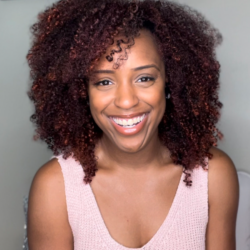Well, it’s that time of year again. The time of year where we as a nation check off the proverbial box of honoring the impact and contributions of African Americans in the United States. For a whole 28 days, we see Dr. Martin Luther King Jr., George Washington Carver, Frederick Douglass, Rosa Parks, Harriet Tubman and countless others surrounded by red, green, yellow and black flooding our timelines, tv screens, classrooms, and communities. But how genuine is the honor, if it lasts for one very short month and doesn’t tell the whole story?
Usually, when students learn about Black history in class, their lessons are limited to slavery or the civil rights era. Don’t get me wrong: these are integral parts of our story, and it’s encouraging to read stories that show our strength, perseverance, and ability to overcome so many adversities. I am proud to come from a culture filled with people who were bold and brave enough to fight for our freedom and rights. But in the same breath, I can’t help but feel disappointed that our students are not learning about the vastness of our greatness. After all, we are much more than just an oppressed culture.
I was fortunate to grow up with teachers, principals, and community members who looked like me. Everywhere I turned, I saw adults who served as mirrors reflecting all the possible things I could grow up and become. Together, they made it a point to introduce me and the rest of our student body to the work of Fannie Lou Hamer the leadership of Ida B. Wells the genius of Madam CJ Walker and Katherine Johnson the magnificence of Joseph Graves and the creative brilliance of James Baldwin, Gwendolyn Brooks, Alvin Ailey, Miles Davis, Gordon Parks, and countless others all year long.
They did this because knew what much of America still hasn’t quite learned: African Americans have made far too many contributions to squeeze into one month. Unfortunately, this isn’t the message most students get. With 80% of teachers being white and 40% of all public schools not having a single teacher of color, Black students across the country are being robbed of the opportunity to see themselves in what they’re studying and experience the richness of Black history. Instead, they’re bombarded with negative narratives based on biases, prejudices, and stereotypes—forcing them to settle for raggedy and distorted views of who they are and what their culture represents.
In 1926, Carter G. Woodson, known as “the Father of Black History” and founder of the Association for the Study of Negro Life (now the Association for the Study of African American Life and History) launched “Negro History Week” to encourage the study of African American history and celebrate the accomplishments of African Americans. Almost a century later, we’re still seeing a blatant absence of Black history and culture in textbooks and curriculums. But why? Black History doesn’t just encourage an appreciation and understanding of African American culture. It also closes the knowledge gap for all age groups and ethnicities. Until African American history is fully included in the American history curriculum of elementary, secondary, and postsecondary schools, Woodson’s vision will remain unfulfilled.
That’s why Black History Month should not be just a time to celebrate African Americans who have paved the way for us all to thrive. It should be a time to challenge the stubbornly persistent tendency to teach Black History as a footnote to American history. We should commit to telling the complete and vibrant story of a complete and vibrant culture to both students and adults.
I hope everyone reading this commits to using their influence—whether it’s in a single classroom, a school, or an entire school system—to help change the narrative, end the gaps in knowledge about Black history, and help ensure that every Black student not only gets a chance to learn about the culture they come from, but has permission to dream about the possibilities of who they can become. Every day. Every month. All year long.







